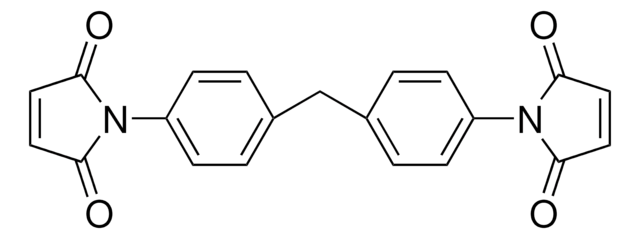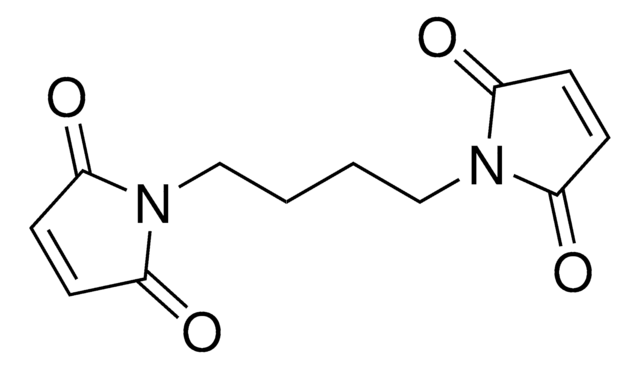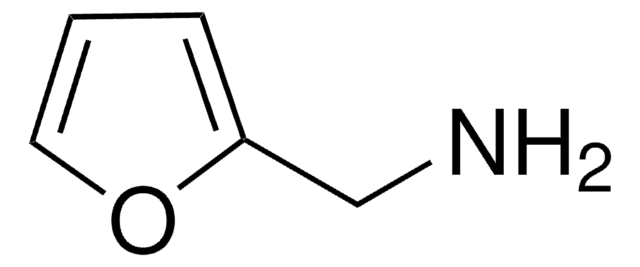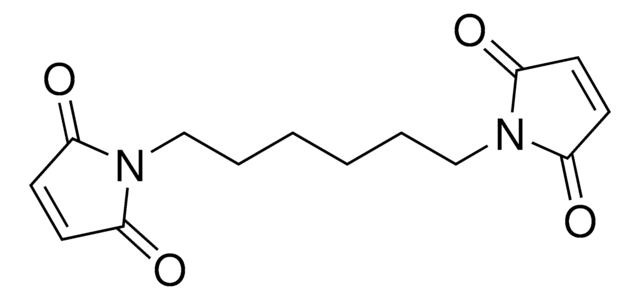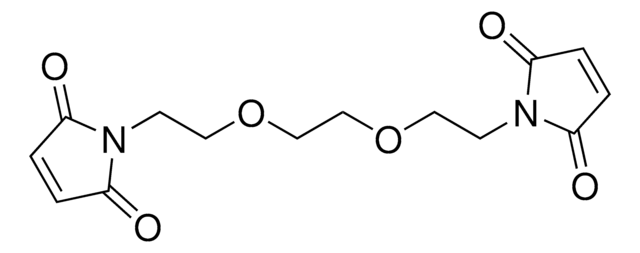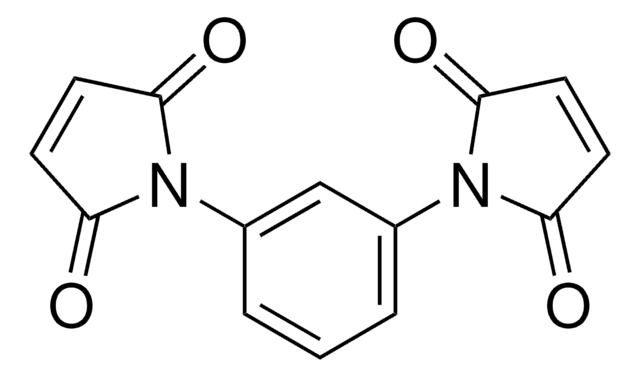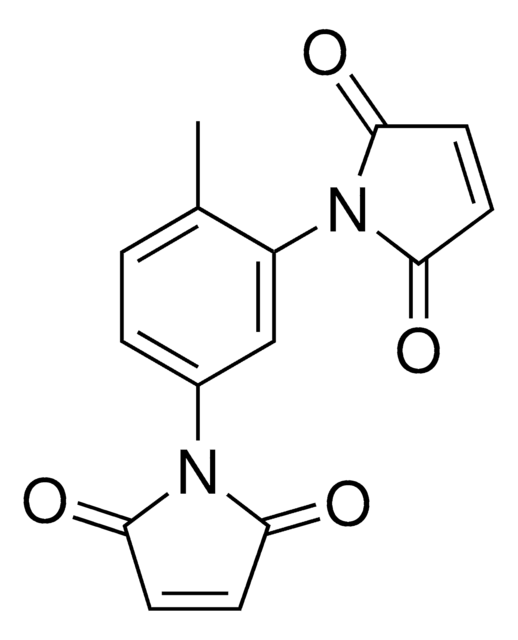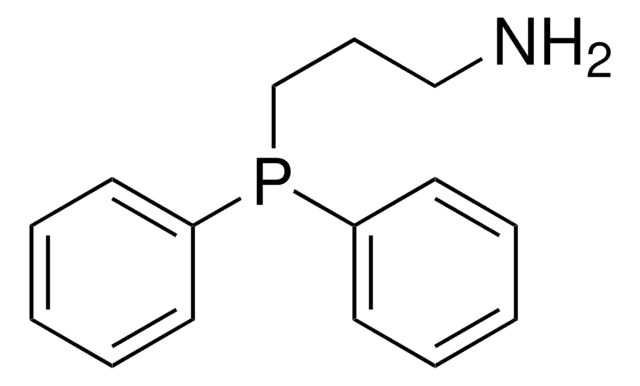803561
BMOE (bis-maleimidoethane)
Synonym(s):
1,1′-ethane-1,2-diylbis(1H-pyrrole-2,5-dione), N,N′-Ethylenebismaleimide, BMOE, Ethylenebismaleimide
About This Item
Recommended Products
form
powder
mol wt
220.18
reaction suitability
reagent type: cross-linking reagent
storage condition
desiccated
solubility
DMSO or DMF: soluble
shipped in
ambient
storage temp.
2-8°C
SMILES string
O=C(C=CC1=O)N1CCN2C(C=CC2=O)=O
InChI
1S/C10H8N2O4/c13-7-1-2-8(14)11(7)5-6-12-9(15)3-4-10(12)16/h1-4H,5-6H2
InChI key
PUKLCKVOVCZYKF-UHFFFAOYSA-N
General description
Features and Benefits
- Reactive groups: maleimide (both ends)
- Reactive towards: sulfhydryl groups
- Short (8.0Å), sulfhydryl-to-sulfhydryl crosslinker, composed of maleimide groups and 7-atom spacer arm
- Shortest bismaleimide crosslinker available for close proximity crosslinking
- Water-insoluble—dissolve first in DMF or DMSO, then add to aqueous reaction buffers
- Noncleavable
Caution
Storage Class Code
11 - Combustible Solids
WGK
WGK 3
Flash Point(F)
Not applicable
Flash Point(C)
Not applicable
Choose from one of the most recent versions:
Certificates of Analysis (COA)
Don't see the Right Version?
If you require a particular version, you can look up a specific certificate by the Lot or Batch number.
Already Own This Product?
Find documentation for the products that you have recently purchased in the Document Library.
Our team of scientists has experience in all areas of research including Life Science, Material Science, Chemical Synthesis, Chromatography, Analytical and many others.
Contact Technical Service